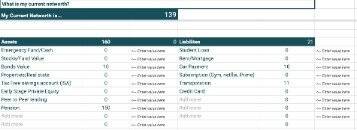Content

Experience shows that complaints can range from a simple expression of dissatisfaction to a formal complaint to a professional regulator or Ombudsman. During this follow-up, restate the resolution and thank them again. If it’s appropriate and you’re in a position to give advice, do so. Let them know you’re available to discuss any future thoughts or issues they have. Collaborating is another desirable conflict management strategy. It involves pinpointing areas of agreement between the conflicting parties and finding a creative solution that works for all.
Decision to be taken by the manager – If there is no unanimity, the views of the members of the committee shall be placed before the manager for his decision. The manager has to take a decision and inform the worker within three days. A periodical review of working of the grievance procedure is required Necessary improvements should be made to make the procedure more effective. The decision of top management on the basis of report of Grievance Committee would be communicated to the aggrieved employee within 3 days from the date of receipt of report. Further, if the aggrieved employees not satisfied then again appeal can be made to the management for revision. On appeal for revision of decision, the management must give the decision to the aggrieved employee within seven days from the date of appeal.
Step 8. Write it up
The grievance handling procedure should be designed in conformity with the existing statutory provisions. Where practicable, the procedure can make use of such machinery as the law might have already provided for. Further the grievance procedure should ensure the speedy redressal of the grievances and must be capable of ensuring a sense of satisfaction to the individuals concerned. As far as possible, the procedure should have a limited number of steps with the provision for at least one appeal. Moreover, top management is not too familiar with the working conditions of the operative employees. It may be difficult for it to attend to employee grievances because of lack of sufficient information.
- The working of the grievance procedure should be reviewed periodically by the human resource department and necessary changes should be introduced to make it more effective.
- It can be said that it a formal communication process between the frustrated employees and management for settlement of their grievances.
- For the resolution to be most effective, make it as quick as possible.
- Failing to identify or meet client expectations often gives rise to complaints.
The grievance procedure will be said to be exhausted if the top management is also not able to redress the grievance. The worker should not take any action against the management until the whole grievance procedure has been exhausted. The worker should ask for voluntary arbitration for the redressal of his grievance. The open door policy is workable only in small organisations. In big organisations, the top management does not have the time to attend to innumerable routine grievances daily which is the work of lower- level managers. The decision, thus, implemented should also be reviewed to know whether the grievance has been satisfactorily resolved or not.
Retention improvement
Five Steps To Handling Employee Complaints Explaineding parties may feel compelled to attack each other, but try to refocus back onto the conversation’s primary goal. Be attentive and listen for threats or ultimatums, aggression, intimidation, bullying, or scare tactics. If you find the discussion is becoming aggressive instead of assertive, help the speaker communicate their position. Threats and coercive offers might halt the problem temporarily, but they are rarely a long-term solution.

